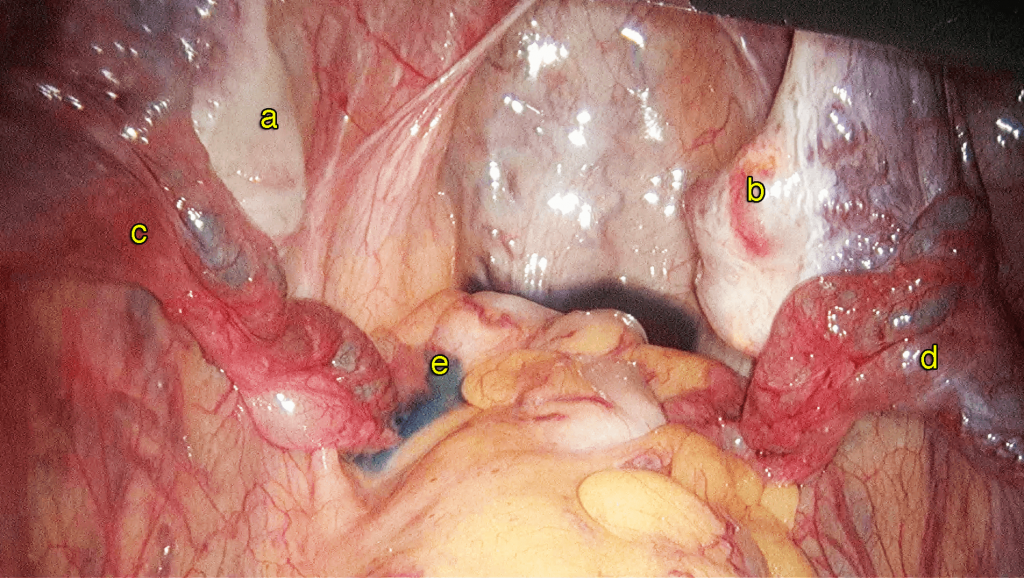Laparoscopy is a very useful tool in the investigation of infertility. Investigations for an infertile couple will include blood tests, ultrasound, checking the quality and quantity of sperms (seminal analysis) and hysterosalpingography (HSG). These are known as non-invasive tests. If abnormalities are detected during these tests, a diagnostic laparoscopy may be suggested for the completion of an infertility workup. I do not believe that routine laparoscopy is necessary for all women who cannot conceive, but it is useful in selected patients.
In many patients where no abnormalities are detected during non-invasive tests, some abnormalities such as pelvic adhesions and endometriosis may be seen during laparoscopy. During laparoscopy, a dyed fluid can also be injected into the uterus via the cervix to see whether the tubes are patent. This is called tubal chromotubation.


When is laparoscopy indicated?
1) Fallopian tubes are found to be blocked or a hydrosalpinx (g) is found during a HSG (see Figures 8.1 and 8.2). Laparoscopy can be performed to correct these conditions. This is discussed in detail in chapter 29.
2) There is a suspicion of endometriosis either by taking a history or endometriotic cysts are seen on ultrasonography. A laparoscopy will assist in confirming the disease as well as treating it (see chapter 25).
3) Fibroids are seen and thought to be the cause of the infertility. A laparoscopic myomectomy can be performed (see chapter 24).
4) Ovarian cysts are seen on ultrasound and these cysts are thought to be the cause of infertility. A laparoscopy can be performed to remove these cysts (Laparoscopic cystectomy, see chapter 27).
5) Pelvic adhesions are seen as an incidental finding during a routine laparoscopic investigation for endometriosis. Such adhesions can be excised laparoscopically.
6) Adenomyosis is a complex disease that usually coexists with endometriosis is suspected. Patients with adenomyosis are also usually subfertile. Laparoscopy can assist is confirming the diagnosis of adenomyosis and surgical excision of part of the adenomyosis can be performed. (This is discussed in chapter 31).
7) Polycystic ovarian disease is suspected, laparoscopic ovarian drilling can be performed. (see chapter 23).
Fact 21.1 Should all women with infertility undergo a routine laparoscopy?
Laparoscopy has a big benefit as an investigative tool in infertility. When a laparoscopy is performed, the pelvis and abdomen can be visualised directly for evidence of any disease. Diseases such as mild endometriosis and pelvic adhesions can never be diagnosed without a laparoscopy. The patency of fallopian tubes can also be checked during laparoscopy. However, in my practice I do not advocate routine laparoscopy for all infertility patients. It is only when pathology is suspected by investigations such as ultrasound examination or hysterosalpingogram, do I advocate that a laparoscopy be performed. Routine laparoscopy for all infertile women is too invasive and the benefit from it is minimal.
Summary
Laparoscopy is a very useful tool in the management of patients with infertility. It can be used as a tool for the investigation and treatment of the many diseases that causes infertility.
